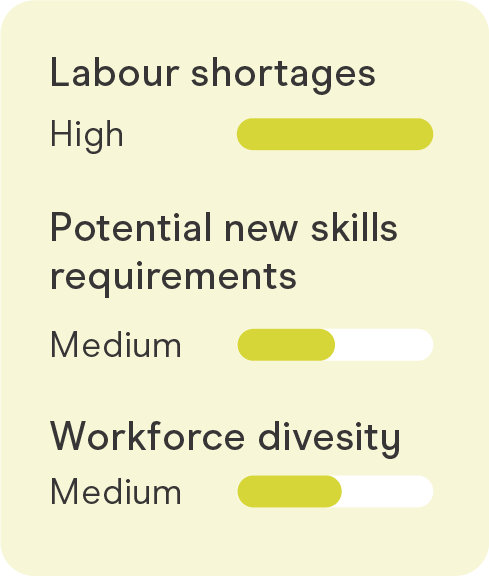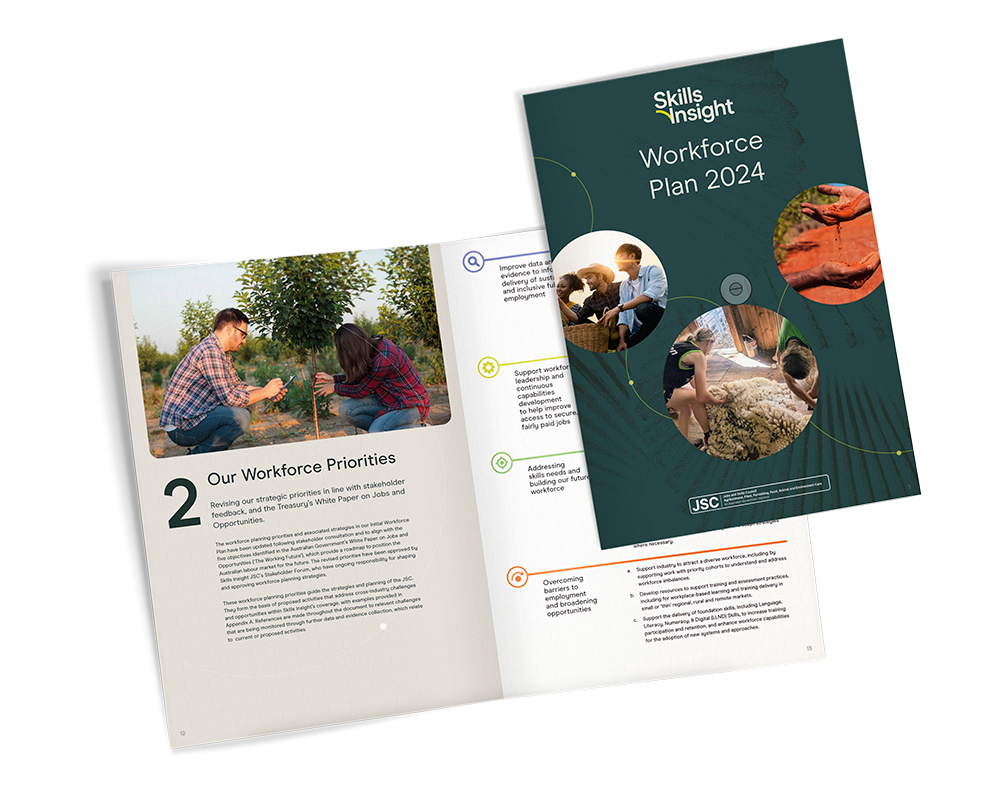This workforce cares for vast natural areas and bushlands, Indigenous Protected Areas, coastal landscapes, national and state parks, private and public gardens, sporting grounds, and green spaces. Demand for skills and labour across these industries is growing as climate change mitigation becomes a global priority, such as to sustain biodiversity, and to restore and rehabilitate landscapes with ecological and cultural importance.
Key updates
Passing of the The Restoring Our Rivers Bill
The Water Amendment Bill 2023 was passed in November, with scope for more funding, time and options for projects to improve the management of the Murray–Darling Basin. This may be a positive catalyst for occupations in Environmental Restoration, Monitoring and Research, some of which were already featured as being in shortage on the 2023 Skills Priority List (e.g. Arborist, Landscape Gardener).
Steady growth in workers within key occupations
The Labour Force Survey has seen a surge of workers as Gardeners (5-yr-change: 13%), Garden and nursery labourers (24%), Environmental Scientists (14%) and Animal Attendants and Trainers (44%), which may reflect an increased focus on robust environmental protections and ecological management.
Opportunities
Growing Industry
Native protection has grown to 19.8% of Australia’s terrestrial land over the past decade, pinpointing demand in ecological protection.
Increasing representation of women
Women only accounted for 22% of this sector in 2021, rising 8% since 2016. There may be opportunities for a greater participation of women.
Low barrier to entry
The 2021 Census showed that the industry comprises many owner-operated entities (45.73% of workers), with 40.75% of all workers having an education attainment at the Year 10 equivalent.
Challenges
Extreme Weather
Whilst climate change can trigger demand for work in environmental stewardship, the nature of outdoor work in this industry may attract OHS and business viability concerns.
Sensitive to changes in government funding
Nature Reserves and Conservation Parks are highly reliant on government investment. Changes to environmental policies may affect funding in this industry.
Data monitoring priorities

58,374
workers
(2021 Census)
3.8%
First Nations
(2021 Census)
12,300
2028 Projection
(JSA Projections)

22%
Female
(2021 Census)

Workforce Plan 2024
The Workforce Plan describes workforce challenges and skill opportunities identified by stakeholders across the industries we work with and outlines strategies to address them.
The 2024 Workforce Plan outlines four key Workforce Planning Priorities to guide the strategies and planning of our JSC work, retaining the strategic intent of the Initial Workforce Plan, with modifications to align with the Australia Government’s White Paper on Jobs and Opportunities.